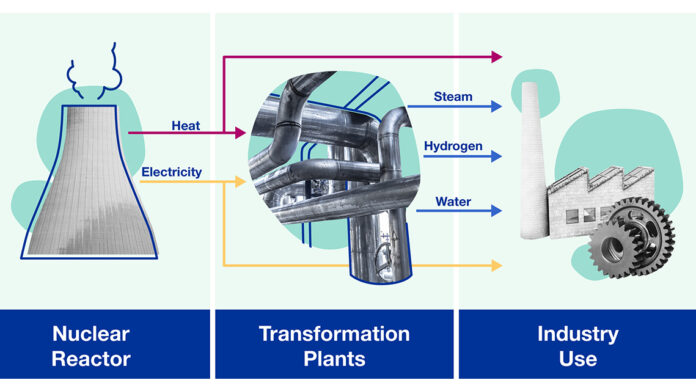Momentum is building for nuclear power in many countries amid soaring fuel prices and growing energy security concerns, but success will depend on governments and industry
According to a new special analysis by the International Energy Agency, as the world faces a global energy crisis, nuclear power has the ability to play a substantial role in assisting countries in successfully transitioning to energy systems dominated by renewables.
Nuclear power can help countries reduce their dependency on imported fossil fuels, reduce carbon dioxide emissions, and allow energy networks to integrate greater amounts of solar and wind power. Building sustainable and clean energy systems without nuclear will be more difficult, risky, and expensive, according to a new paper, Nuclear power and secure energy transitions: From today’s issues to tomorrow’s clean energy systems.
With nuclear facilities in 32 nations, nuclear is now the second largest source of low-emission power behind hydropower. Because many were built in the aftermath of the 1970s oil shocks, facilities that are more than 30 years old account for around 63 percent of today’s nuclear generating capacity. However, a number of established and developing economies have lately declared energy programs that contain significant responsibilities for nuclear power as well as significant financial incentives to engage in it.
“In today’s context of the global energy crisis, skyrocketing fossil fuel prices, energy security challenges and ambitious climate commitments, I believe nuclear power has a unique opportunity to stage a comeback,” said IEA Executive Director Fatih Birol. “However, a new era for nuclear power is by no means guaranteed. It will depend on governments putting in place robust policies to ensure safe and sustainable operation of nuclear plants for years to come – and to mobilise the necessary investments including in new technologies. And the nuclear industry must quickly address the issues of cost overruns and project delays that have bedevilled the construction of new plants in advanced economies. As a result, advanced economies have lost market leadership, as 27 out of 31 reactors that started construction since 2017 are Russian or Chinese designs.”
In the IEA’s global pathway to reach Net Zero Emissions by 2050, nuclear power doubles between 2020 and 2050, with construction of new plants needed in all countries that are open to the technology. Even so, by mid-century, nuclear only accounts for 8% of the global power mix, which is dominated by renewables.
Despite efforts to extend the lives of some current facilities, the nuclear fleet in industrialized nations might fall by one-third by 2030 if no additional measures are made. While plant lifetime extensions involve significant investment, they often provide power costs that are competitive with wind and solar in most regions.
Strong regulations are required to support nuclear power and improve its safety, but the sector must also do a better job of delivering projects on time and on budget to ensure that nuclear-generated electricity is competitive, according to the research. Government finance will continue to be required to attract new investment, not only for plants but also for the development of cutting-edge technology. This is because private sector financing for such capital-intensive and long-lived assets, particularly those exposed to severe policy risk, is rarely available.
Nuclear reactors are currently under construction in 19 nations, illustrating the recent momentum behind nuclear power, which is anticipated to be boosted further by recent price increases in oil, gas, and electricity. At the same time, popular and political opposition to nuclear power exists in some countries, and the IEA makes no advice to governments that choose not to include it in their energy mix.
Half of the emissions reductions by mid-century in the IEA’s Net Zero by 2050 scenario come from technologies that are not yet commercially viable. This includes small modular reactors (SMRs), which are advanced nuclear reactors with a capacity of less than 300 megawatts, or around one-third of a standard plant. SMRs’ cheaper cost, smaller size, and lower project risks may increase social acceptance and encourage private investment. This potential technology is gaining popularity and support in Canada, France, the United Kingdom, and the United States.
SMRs might also repurpose the locations of decommissioned fossil-fuel power stations, using existing transmission, cooling water, and trained workforces. However, the successful long-term deployment of SMRs depends on strong policymaker support beginning now, not only to mobilize investment but also to streamline and harmonize regulatory regimes.


